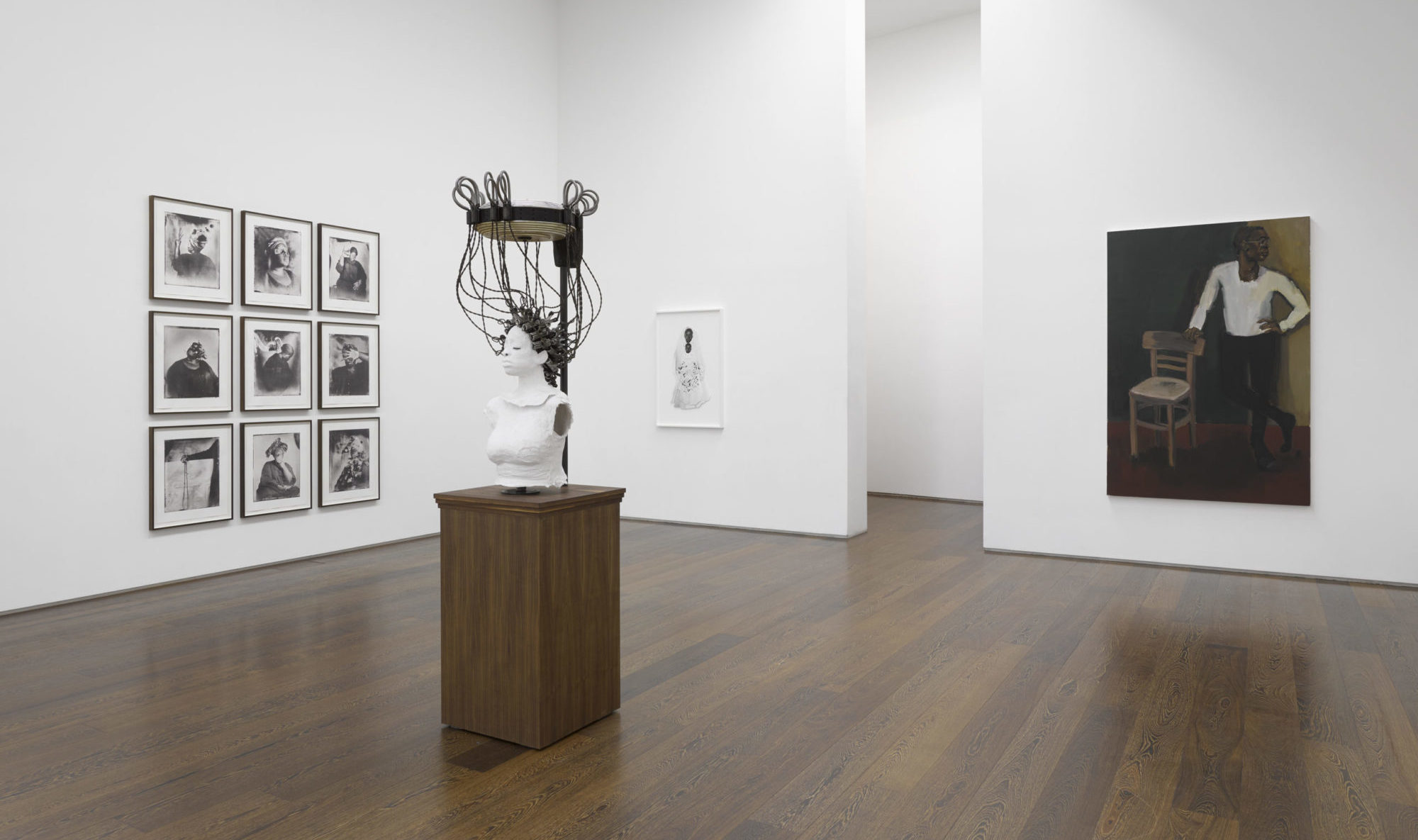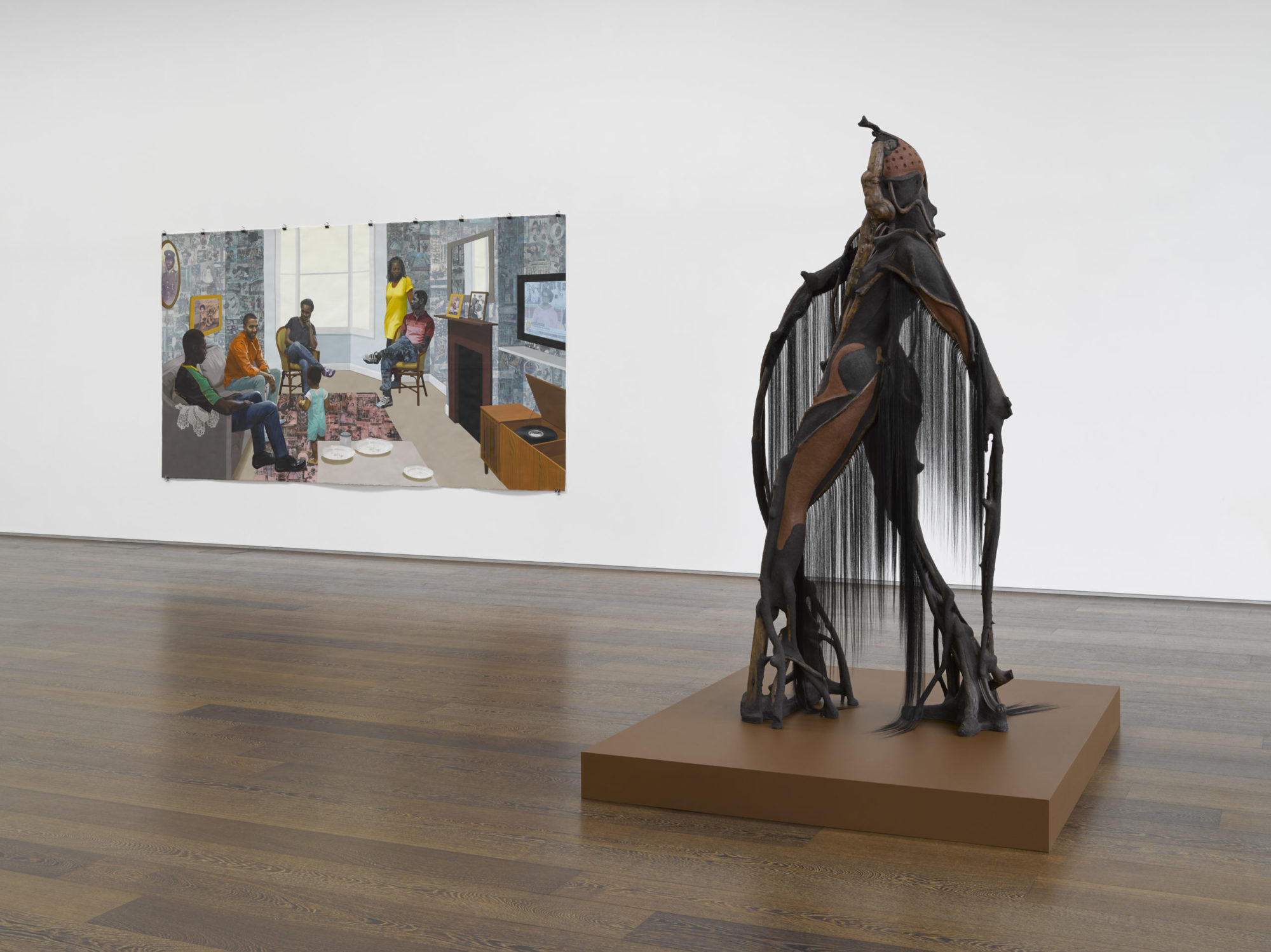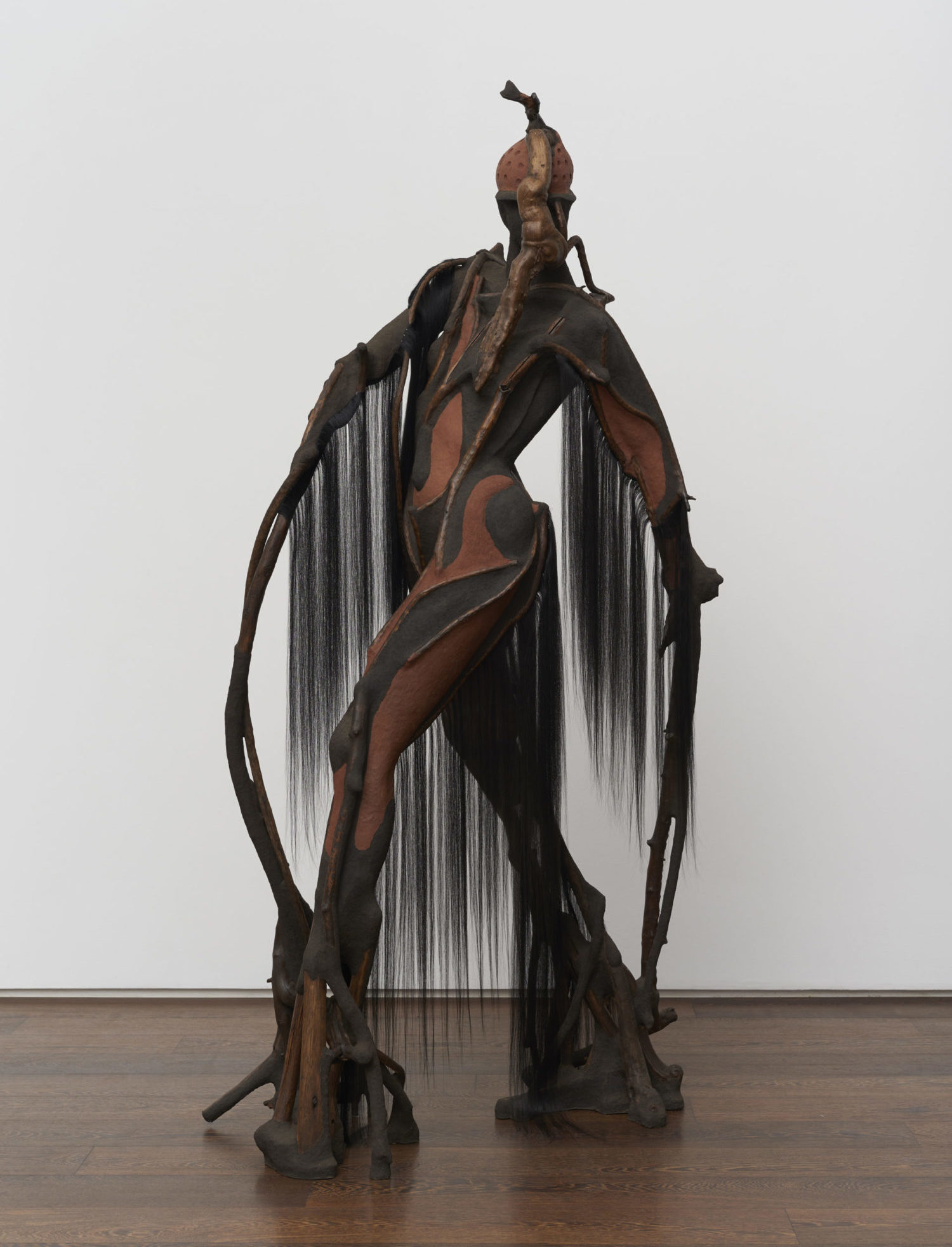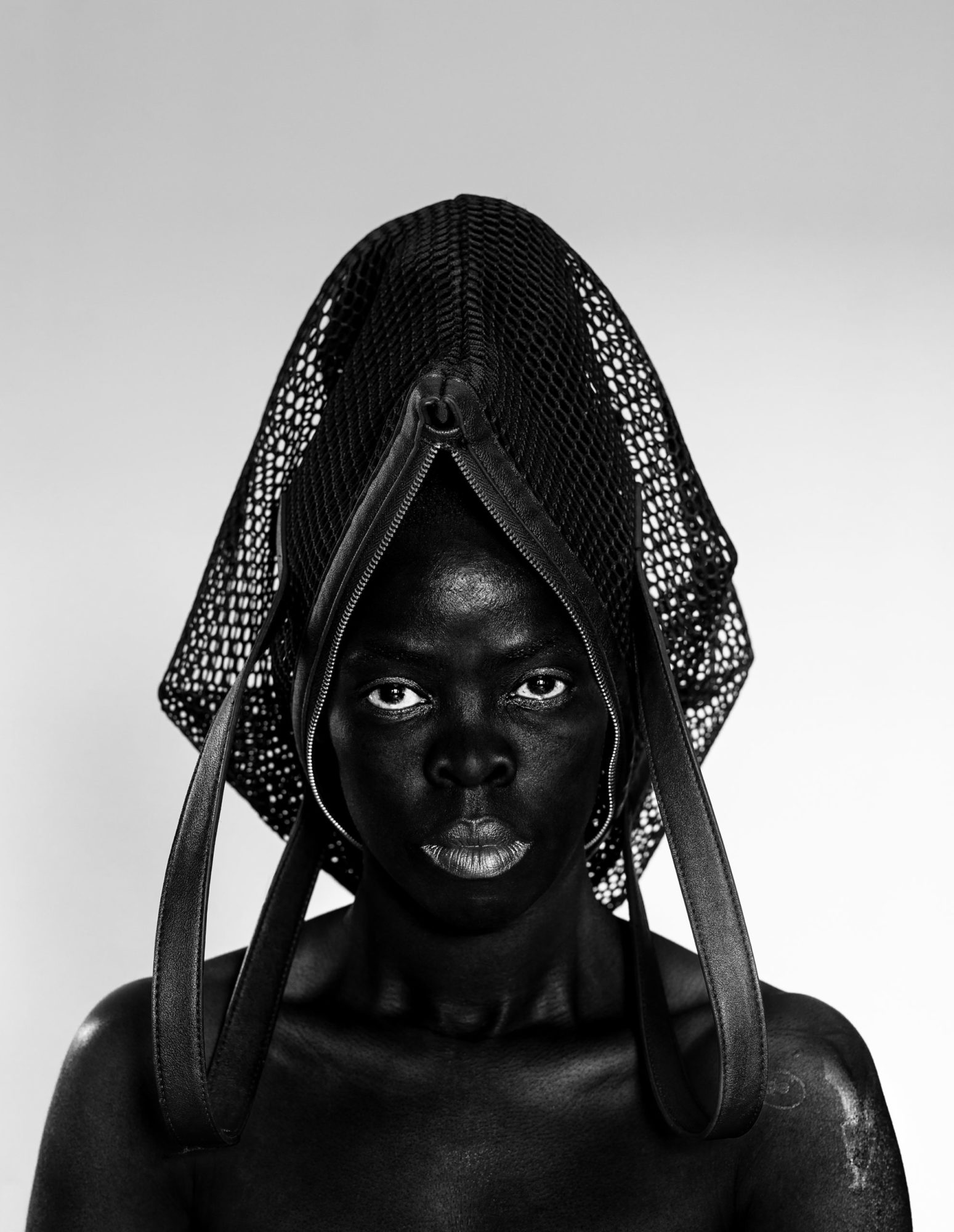Rock My Soul

Rock My Soul, installation view, 2019 [photo: Jack Hems; courtesy of the artist and Victoria Miro Gallery, London]
Share:
Emerging from an earth of silenced voices, artists take it upon themselves to speak for a community. Rock My Soul was curated by celebrated filmmaker and installation artist Isaac Julien. Often referenced and revered for his films Looking for Langston (1989) and Young Soul Rebels (1991), and for his biographical portrait of revolutionary psychologist and philosopher, Frantz Fanon: Black Skin, White Mask (1995), which investigates the psychological effects of the colonial encounter. As a filmmaker and curator, Julien makes art both form and force to unpack exchanges that define social arenas and the ubiquity of economic realms. In timely praise for the works of living and nonliving intergenerational artists, the exhibition subtly collapses time—obscuring the artists’ differences in origin, states of being, and age. Julien’s curatorial approach urges a rumination upon form and figuration through the abstraction and dissection of accoutrements and aesthetics often found in black existential realms. The exhibition drives a needed exchange between the artistic works of black women/nonbinary artists born or working in Africa, Europe, North America, and elsewhere. The press release states that Rock My Soul borrows its title from the eminent black feminist scholar and writer bell hooks’ 2003 book, in which she investigates the role of black self-esteem in empowering a body politic both culturally and politically.
Rock My Soul, installation view, 2019 [photo: Jack Hems; courtesy of the artist and Victoria Miro Gallery, London]
Wangechi Mutu’s arresting sculpture She Walks (2019) summons visitors into Rock My Soul. This aberrant specter composed of red soil, charcoal, paper pulp, wood (Rhus natalensis/silver oak), and glue merges organic items with modern, fabricated ephemera such as steel nails and long, sweeping synthetic hair—the latter a signpost of present-day, manufactured beauty standards. The sculpture marks a return to the artist’s penchant for altering the female form. Mutu lures the viewer into a web of otherworldly apparitions where black women and unearthly creatures become the nameless. These figures embody the nameless, as in their perplexing and altered states they are unrecognizable to the naked eye. They depict images unseen, but in no way are these sights communicating the invisible. As expressed in the aforementioned and eponymous work by bell hooks, “One of the most powerful methods of psychological terrorism used by white supremacists (whether white or nonwhite) was and continues [to be] rendering black folks invisible. Psychoanalytically speaking, we become subjects through a process of acknowledgement.”1 And as such, most black people have been fundamentally shaped by the brutal side of American history and its enduring systems. After bearing marks, disfigurement, and defacement by the hands of human perversions, black women and their worlds embody escape and power in Mutu’s multimedia practice.
Self-taught artist and trained sociologist Frida Orupado creates colossal and splintered images portraying the black female body through a process of streaming collages through social media to obtain source material, and to disrupt the endless circulation of images of women’s bodies. Untitled (2019) presents a collaged vision of a young black girl, broken and hollow-eyed, staring at the viewer. In a white dress she totes a bouquet, such as those often held by brides on their wedding day. The uncomfortable image sparks questions about child marriage and media sexualization of minors.
For some black artists contemporary art has served as a path to financial gain and great fame. Their addressing of social, political, and cultural issues has often led to assumptions that their work is autobiographical, causing their work to be framed within the contours of historic racial/colonial subjugation and difference. The discourses that have come to define and pervade the political and social realms of black communities are inevitability affixed to the dismantling of works made by black artists because of their mere being. This issue explains Achille Mbembe’s contentious description of various historical characterizations of the black man, which can be applied to the black artist in all forms of notoriety who is “captive to the empire of joy” and “is above all a body—gigantic and fantastic—member, organs, colour, a smell, flesh, and meat, an extraordinary accumulation of sensations.” 2 Rock My Soul refigures new and sustained transcultural entanglements—transnational slavery or the politics of skin and hair—creating an opportunity to unpack contemporary art’s role as a site of inquiry and commerce. Julien’s inclusion of various mediums stresses the diversity of methods black artists employ to assert themselves and their ideas—often unseen in London galleries.
Wangechi Mutu, She Walks, 2019, red soil, charcoal, paper pulp, wood (rhus natalensis, silver oak), wood glue, steel nails and synthetic hair, 210 x 101 x 51 cm [courtesy of the artist and Victoria Miro, London/Venice]
Zanele Muholi, Cebo II, Philadelphia, 2018, 2018, photographic mural, 400 x 309 cm [courtesy of the artist and Stevenson, Cape Town, Johannesburg and Yancey Richardson, New York]
Karon Davis’ Hair Peace (2019) is a sculpture of a figure in a white bodice, with a sullen and muted face, glass eyes—its synthetic hair held high in rollers attached to an antique waving machine. Davis’ theatrical, life-sized works investigate loss and survival. Those who choose to gaze upon the face of the Medusa-like Hair Peace will not turn to stone as myth promises but will instead be confronted with the toil of beauty maintenance paradigms.
Zanele Muholi’s contribution to Rock My Soul is the valiant work of an artist refusing the death that is invisibility and the woeful rank of silence. At a time when South African President Cyril Ramaphosa declares that urgent action is needed to tackle gender-based violence in their country, Muholi’s epically sized self-portraits and ongoing photographic series of South African lesbians, as well as the photographic mural Cebo II, Philadelphia (2018), constitute an unapologetic incising of black queer people into the world of artistic representation, a community increasingly represented in art and popular culture by others seeking to advance their own ends by the consumption and capture of black queer narratives and the discourses alternative effervescence.
Rock My Soul is a rare opportunity to witness works by artists of the African diaspora in conversation with one other. By presenting a high-caliber selection of women/nonbinary artists operating within and responding to various artistic eras and jurisdictions they un/consciously employ different approaches to figuration and abstraction, while Julien reaffirms an artworks ability to establish self-esteem, revealing human relations with the systems that surround them.
Emmanuel Balogun is a British Nigerian writer and researcher. His critical focus falls upon discourses concerning Sub-Saharan Africa and its diaspora. Fixed upon driving a dialectic among international development, art, and anthropology, he is concerned with employing artistic practice as a tool for realizing positive change. Balogun is also the founder of V I / Visual-Ideation.
References
| ↑1 | bell hooks, Rock My Soul (New York, Washington Square Press, 2003), 74 |
|---|---|
| ↑2 | Achille Mbembe, Critique of Black Reason (Durham and London: Duke University Press: 2017), 39. See the remarks of Pliny the Elder, Histoire Naturelle, vol. 6-2, Paris: Les Belles Lettres, 1980, and Al-Mas’udi, Les praires d’or, vol. 1, Paris: Imprimerie Impériale, 1861 |


